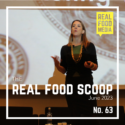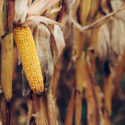Dear friends,
If there is one article I would suggest you all read to understand some of my and many others main concerns about genetically engineered seeds, it’s this A1 story in The Times: “Doubts About the Promised Bounty of Genetically Modified Crops.”
I cannot stress enough what an enormous moment this is: Finally, the argument that so many of us have been making for nearly twenty years gets front-page coverage in The Times. They didn’t acknowledge they were late to the game here but at least they ran this powerful story. Sometimes the truth sees the light of day. It did yesterday in The New York Times. Here is the letter to the editor I submitted last night:
Dear Editor,
Thank you for Danny Hakim’s excellent reporting in “Doubts About the Promised Bounty of Genetically Modified Crops.” The arguments that Hakim lays out—that genetically engineered crops do not deliver on the promise of higher yields nor lower overall pesticide use—in fact, are the same arguments that I and many others have been making for years. Indeed, my late father, Marc Lappé made similar points in his co-authored manuscript Against the Grain, published in 1999.
Today, we have even more data on the problems associated with the widespread adoption of these technologies, from weed resistance to concerns with the herbicide glyphosate, widely used on genetically engineered seeds and recently classified by the World Health Organization as a probable carcinogen. But there is another way: We also have more and more evidence about the productivity, without any risk, of agroecological farming methods.
One study that looked at adoption of these practices among farmers across the continent of Africa found an average yield increase of 79 percent and the International Assessment of Agricultural Knowledge, Science, and Technology for Development, a multi-year study developed by the World Bank, United Nations Environment Program among other international institutions and contributed to by hundreds of experts, came to similar conclusions. I hope that this reporting will help more policy makers understand the urgency of moving away from a technology that is undermining the sustainability of our food system.
Anna Lappé
Photo by Lindsay Eyink/Wikimedia



